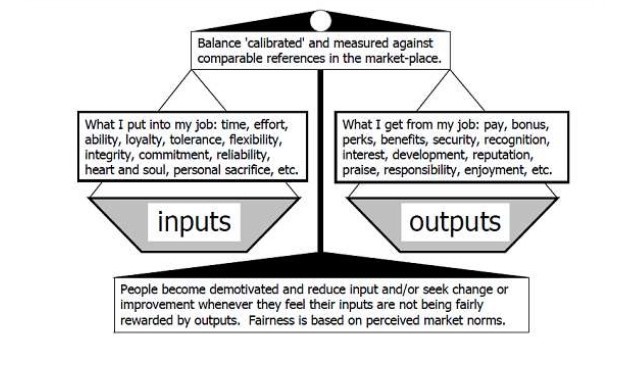The Adam’s Equity Theory posits that people maintain a fair relationship between the performance and rewards in comparison to others. In other words, an employee gets de-motivated by the job and his employer in case his inputs are more than the outcomes.
The Adam’s Equity Theory was proposed by John Stacey Adams, and is based on the following assumptions:
- Individuals make contributions (inputs) for which they expect certain rewards (outcomes).
- To validate the exchange, an individual compares his input and outcomes with those of others and try to rectify the inequality.
There are three types of exchange relationships that arise when an individual's outcomes are compared with that of other persons.
Overpaid Inequity
When an individual perceives that his outcomes are more when compared to his inputs, in relation to others. The overpaid inequity can be expressed as:

Underpaid Inequity
When an individual perceives that his outcomes are less when compared to his inputs, in relation to others. The Underpaid Equity can be expressed as:

Equity
An individual perceives that his outcomes in relation to his inputs are equal to those of others. The Equity can be expressed as:

Thus, Adam’s Equity Theory shows the level of motivation among the individuals in the working environment. An individual is said to be highly motivated if he perceives to be treated fairly, while the feelings of demotivation arise if an individual perceives to be treated unfairly in the organization.

Thus, an individual’s level of motivation depends on the extent he feels being treated fairly, in terms of rewards, in comparison to others.